Neuroimaging of the Most Common Meningitis and Encephalitis of Adults: A Narrative Review
- PMID: 38893591
- PMCID: PMC11171665
- DOI: 10.3390/diagnostics14111064
Neuroimaging of the Most Common Meningitis and Encephalitis of Adults: A Narrative Review
Abstract
Meningitis is the infection of the meninges, which are connective tissue membranes covering the brain, and it most commonly affects the leptomeninges. Clinically, meningitis may present with fever, neck stiffness, altered mental status, headache, vomiting, and neurological deficits. Encephalitis is an infection of the brain, which usually presents with fever, altered mental status, neurological deficits, and seizure. Meningitis and encephalitis are serious conditions which could also coexist, with high morbidity and mortality, thus requiring prompt diagnosis and treatment. Imaging plays an important role in the clinical management of these conditions, especially Magnetic Resonance Imaging. It is indicated to exclude mimics and evaluate the presence of complications. The aim of this review is to depict imaging findings of the most common meningitis and encephalitis.
Keywords: computed tomography; encephalitis; magnetic resonance imaging; meningitis.
Conflict of interest statement
The authors declare no conflicts of interest.
Figures









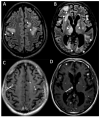

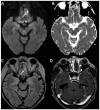

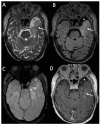
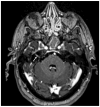
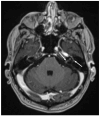

Similar articles
-
Varicella zoster virus infection of the central nervous system in a tertiary care center in Lebanon.Med Mal Infect. 2020 May;50(3):280-287. doi: 10.1016/j.medmal.2019.08.005. Epub 2019 Sep 13. Med Mal Infect. 2020. PMID: 31526545
-
An approach for differentiating echovirus 30 and Japanese encephalitis virus infections in acute meningitis/encephalitis: a retrospective study of 103 cases in Vietnam.Virol J. 2013 Sep 11;10:280. doi: 10.1186/1743-422X-10-280. Virol J. 2013. PMID: 24025733 Free PMC article.
-
Magnetic Resonance Imaging Findings in Viral Encephalitis: A Pictorial Essay.J Neurosci Rural Pract. 2018 Oct-Dec;9(4):556-560. doi: 10.4103/jnrp.jnrp_120_18. J Neurosci Rural Pract. 2018. PMID: 30271050 Free PMC article. Review.
-
Outcome of Patients with Meningitis and Encephalitis at Tertiary Care Hospital in Eastern Nepal.Kathmandu Univ Med J (KUMJ). 2017 Jan.-Mar.;15(57):40-44. Kathmandu Univ Med J (KUMJ). 2017. PMID: 29446361
-
Serious infections of the central nervous system: encephalitis, meningitis, and brain abscess.Adolesc Med. 2000 Jun;11(2):401-25. Adolesc Med. 2000. PMID: 10916131 Review.
Cited by
-
Effect of Whole-Brain Radiotherapy Dose on the Occurrence of Otitis Media and Mastoiditis in Patients With Lung Cancer With Brain Metastasis.Clin Transl Sci. 2025 Jun;18(6):e70269. doi: 10.1111/cts.70269. Clin Transl Sci. 2025. PMID: 40539743 Free PMC article.
-
A Case of Fatal Herpes Simplex Virus 1 Encephalitis Complicated by Status Epilepticus: From Elective Phlebectomy to Intensive Care.Cureus. 2025 May 2;17(5):e83346. doi: 10.7759/cureus.83346. eCollection 2025 May. Cureus. 2025. PMID: 40452740 Free PMC article.
References
-
- Barshes N., Demopoulos A., Engelhard H.H. Anatomy and Physiology of the Leptomeninges and CSF Space. In: Abrey L.E., Chamberlain M.C., Engelhard H.H., editors. Leptomeningeal Metastases. Springer; New York, NY, USA: 2005. pp. 1–16. - PubMed
-
- Kanamalla U.S., Ibarra R.A., Jinkins J.R. Imaging of cranial meningitis and ventriculitis. Neuroimaging Clin. N. Am. 2000;10:309–331. - PubMed
Publication types
LinkOut - more resources
Full Text Sources

